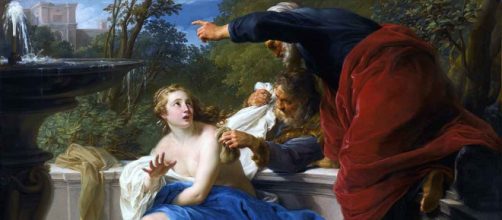Now that we know about the predatory acts of performing artists like Kevin Spacey and Bill Cosby and the fierce bigotry of visual artists like Renoir and Degas, should we shun their art?
Movie and museums and immoral artists
That's the question Erich Hatala Matthes, a philosophy professor at Wellesley College, asks in his new book "Drawing the Line: What to Do with the Work of Immoral Artists from Museums to the Movies." His answer?
You need to "arrive at your own conclusions" by asking yourself if there's any redeeming value to the work.
That's what Matthes tells his students when he assigns the writings of, say, Immanuel Kant, who held racist beliefs.
In other words, don't close yourself off to the work of artists who behave badly—test for aesthetics, meaning, and or thoughtfulness instead.
A variation on a theme
And while you're at it I have a question - a variation on Matthes' theme - about moral artists whose works are not moral. I'm talking about the 18th-century painter Pompeo Batoni. He was not only moral but also highly religious.
Yet his many paintings of the Bible story of Susanna and the Elders demonstrate unexpected hostility to a woman - unexpected because his take on the story is not scriptural.
Remember the story? Susanna was washing in the privacy of her yard when two aged men peering over her fence threatened to accuse her of immoral behavior (punishable by death) if she doesn't have sex with them.
Batoni was drawn to this story again and again. But unlike other painters who pictured this story as written, he showed the elders do more than threaten Susanna.
What you see are the elders trying to rip the bath toweling covering Susanna's nude body. The Bible story doesn't say that. These men are said only to be Peeping Tom asking for sexual favors and making idle threats to get their way.
So, the question remains:
Is the aggression of the elders worthy of our attention? I vote "no."
Not only did Batoni go beyond scripture, but the emotional intensity of the scene also goes beyond the canon of the 18th century, known as the Age of Reason and high-mindedness.
Granted, history books say that Batoni was given to deep feeling and endowed his figures with exaggerated emotive expressions.
You can certainly see that in his Christ in Glory, in which he describes intensely worshipful angels and adoring saints.
Cry me a river
Historian Heinrich Wilhelm Tichbein suggests how tender-hearted Batoni was. When he asked him why he didn't finish his Coriolanus and His Mother painting, the painter said he couldn't because the image moved him too much.
Batoni explained that he was moved to weeping when Coriolanus's mother pushed him away after being banished from Rome, the city of his birth, "that city where I fed you from my breast," she said. The painter was so upset painting this that he shed bitter tears and couldn't go on.
Is that why he was so off-script and set the elders on Susanna? He identified with Coriolanus and faulted his mother.


